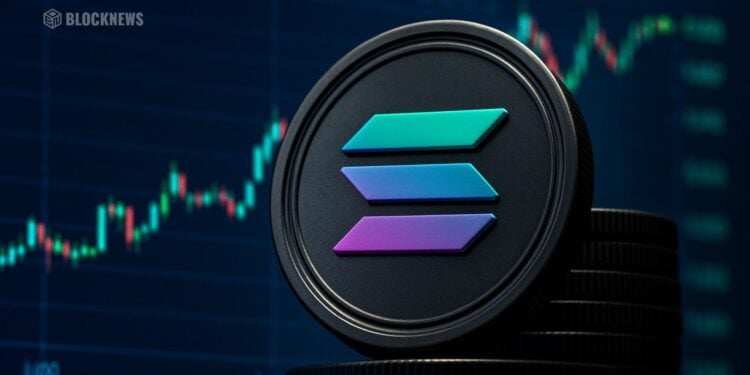- Tether launches USDT and Tether Gold on Solana, unlocking $175B in liquidity.
- Solana tops blockchain revenue charts with $4.83M in 24-hour app revenue.
- Hong Kong launches first Solana ETF as institutional adoption accelerates.
Tether just brought both USD₮ and Tether Gold (XAUT) to the Solana blockchain, using the Legacy Mesh interoperability framework — and it’s already turning heads. This move opens the door for Solana users to tap into nearly $175 billion in cross-chain liquidity, fueling everything from DeFi applications to treasury management and large-scale settlements.
The new USDT0 bridge has already processed over $25 billion across twelve blockchains, proving its reliability before the Solana launch. Now, developers and institutions on Solana can access that same liquidity layer for payments, collateralized lending, and other financial tools.
Matt Hougan, Bitwise’s Chief Investment Officer, said this integration could cement Solana’s role as the go-to blockchain for banking-grade stablecoin transactions. Combined with tokenized securities protocols like Splyce and Chintai, Solana is positioning itself as a serious player in the institutional DeFi space.
Solana Takes the Lead in Blockchain Revenue
When it comes to daily app revenue, Solana currently sits at the top. Data shows it generated roughly $4.83 million in the last 24 hours — beating Binance Smart Chain ($3.85M) and Ethereum ($2.7M). Hyperliquid L1 followed at $2.97M, while Base, edgeX, Arbitrum, and Polygon trailed behind.
This surge in revenue signals high network activity and demand for transactions, both critical indicators of Solana’s strength. As one user pointed out on X, “It’s not just hype anymore — people are actually using Solana.”
At the moment, SOL is trading near $189.45, and market analyst Ali Martinez believes the token could retest the $260 mark if momentum continues.
Technical Picture: Cautious but Constructive
On the technical side, Solana’s price is consolidating between $180 and $190, holding that range since late August. The daily chart shows a bearish short-term setup — the 20-day moving average has crossed below the 50-day, a pattern that sometimes hints at weakness.
If SOL slips under $190, traders are eyeing $170 as the next major support level. But if it manages to climb past $211, sentiment could flip bullish again. A break above $300, which marked the yearly high, would likely ignite a run toward $500 or beyond.
Momentum indicators seem mixed for now. The RSI hovers around 45 — not oversold, not bullish — while the MACD is converging, showing that buying pressure might be slowly rebuilding.
Institutional Interest Grows With ETF Developments
In another big development, Hong Kong just launched the world’s first Solana spot ETF, while asset manager 21Shares filed a Form 8-A with the U.S. SEC, signaling its intent to register a Solana-based product stateside.
Though separate moves, both hint at the same narrative — institutional money is circling Solana. ETFs make it easier for traditional investors to gain exposure without dealing with wallets or exchanges. That could mean more liquidity and long-term demand once approvals start rolling in.
After seven months of range-bound trading, Solana has built what many see as a strong ascending channel. Whether it breaks higher or slips lower depends largely on how the $190 support holds. Above $211, bulls regain control. Below it, the market could retest deeper support zones.
For now, Solana stands out not just for its speed and scalability, but for leading the pack in network revenue — and now, institutional-grade recognition.














